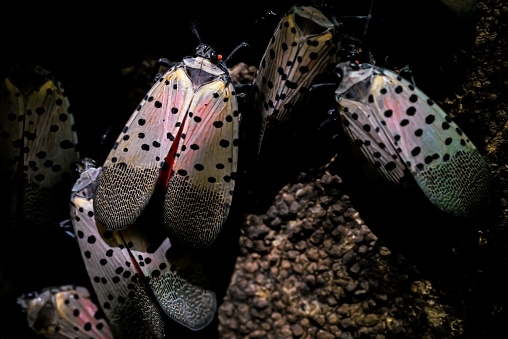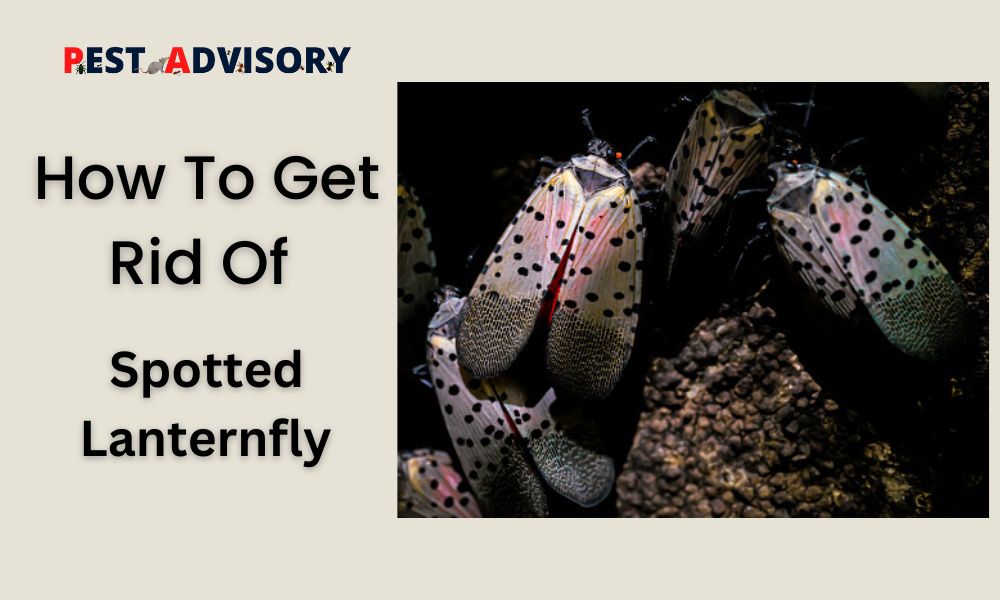The spotted lanternfly, an invasive pest native to Asia, has become a destructive force in certain regions, causing harm to trees, crops, and landscapes. To protect against their voracious feeding habits, it’s crucial to take action.
In this article, we’ll explore effective strategies to monitor and control spotted lanternflies. From scraping off and destroying egg masses to implementing various control methods, learn how to manage their presence and help mitigate the damage caused by this invasive pest.
Why There Are Spotted Lanternflies In My Garden?
The presence of spotted lanternflies in your garden could be due to several reasons. Spotted lanternflies are known to be invasive pests that can travel and spread easily, infesting new areas.
Important Note: If you're tired of pests and want a reliable solution, then you should definitely consider seeking help from a professional pest control company. DIY solutions can be effective, but if you're dealing with a significant pest infestation, you don't want to rely solely on DIY methods. Pest control companies typically don't charge huge fees. You can fill out this form to receive free quotes from the top local pest control companies, and compare the quotes and see for yourself. Then, finally, your pest problems will be eliminated for good.
Below are a few potential explanations as to why you might have come across spotted lanternflies in your garden.
Geographical Location
Lanternflies are known to be prevalent in certain regions where they have been introduced, such as the northeastern United States. If you are located in one of these regions, the chances of having lanternflies in your garden may be higher.
Host Plants
Spotted lanternflies are known to feed on a wide range of host plants, including fruit trees, ornamental trees, and vines. If you have any of these host plants in your garden, it could attract lanternflies to lay their eggs and feed on them.
Proximity to Infested Areas
Spotted lanternflies can easily travel from one area to another, especially when in their nymph stage. If your garden is located close to an area where lanternflies are known to be present, they could migrate to your garden in search of food.
Lack of Natural Predators
Spotted lanternflies are relatively new pests in certain regions, which means that they may not have many natural predators to keep their population in check. This could result in a higher presence of lanternflies in your garden.
Human Activity
Human activity, such as the movement of infested materials or equipment, can inadvertently introduce spotted lanternflies to new areas. For example, if you have recently brought in plants, firewood, or other outdoor items from an infested area, it could result in the introduction of lanternflies to your garden.
How to Get Rid of Spotted Lanternflies
Scraping and Destroying Egg Masses
Check trees, rocks, and other surfaces for egg masses, which are brownish-gray and covered in a waxy coating. Scrape them off carefully and destroy them by crushing or immersing them in alcohol or soapy water. This prevents them from hatching and reduces the population of spotted lanternflies in your area.
Apply Insecticide Spray
Some common insecticides used for controlling spotted lanternflies include neem oil, pyrethroids, and systemic insecticides such as imidacloprid. It’s important to use these insecticides according to the recommended application rates and timing to target nymphs and adults and effectively manage the pest population.
Wrap Tree Trunks with Sticky Bands
To do this, wrap a band of sticky tapes, such as double-sided tape or tree banding tape, around the trunk, about 4-5 feet from the ground.
Make sure the tape is tightly secured and covers the entire circumference of the trunk. This traps the nymphs and adults, preventing them from reaching the upper parts of the tree and causing damage.
Regularly check and replace the sticky bands as needed to maintain their effectiveness.
Handpick and Destroy
Handpicking and destroying spotted lanternfly nymphs and adults is an effective control method. Physically remove them by handpicking them from plants and trees, and drop them into a container of soapy water or alcohol to kill them. Be sure to wear gloves and take precautions to avoid direct contact.
Use Biological Control
Encouraging natural predators, such as predatory insects and birds, can help reduce their population. Ladybugs, praying mantises, and certain bird species are known to feed on lanternflies.
Creating a habitat that supports these beneficial organisms, such as by planting native flowers and providing nesting sites, can help promote natural control of the pest without the need for chemical insecticides.
Clean and Prune
Cleaning and pruning are essential for spotted lanternfly management. Remove heavily infested branches, stems, and plants, and prune trees and plants to improve their health and make them less attractive to lanternflies. This reduces their food sources and disrupts their lifecycle, helping to control their population in your garden or area.

Use Traps and Barriers
Traps and barriers can be effective in catching and controlling spotted lanternflies. Sticky tapes or nets can be placed around vulnerable plants or areas to trap nymphs and adults. This physical barrier prevents them from reaching the plants and helps in reducing their population.
Limit their Food Sources
Lanternflies are known to feed on a wide range of plants, including fruit trees, grapevines, hops, hardwoods, and ornamental plants like the Tree of Heaven. By removing or treating preferred plants that attract lanternflies, you can reduce their food supply and discourage their presence in your garden or surrounding areas.
Seek Professional Help
If you are facing a severe or overwhelming infestation of lanternflies, it’s recommended to seek professional help. Pest control services can provide expertise in using effective control methods and strategies to manage the infestation efficiently and protect your garden or property from further damage.
Precautions
Wear Protective Clothing
When handling spotted lanternflies or applying insecticides, wear gloves, long sleeves, long pants, and closed-toe shoes to protect your skin and prevent contact with pests or chemicals.
Follow Label Instructions
When using insecticides, always read and follow the label instructions carefully, including application rates, timing, and safety precautions.
Avoid Contact with Egg Masses
When scraping and destroying spotted lanternfly egg masses, use caution and avoid direct contact with the eggs or the waxy coating.
Dispose of Pests Properly
Dispose of spotted lanternflies and their egg masses properly by crushing them or immersing them in alcohol or soapy water to ensure they are killed and cannot spread.
Prevent Accidental Transportation
Avoid transporting spotted lanternflies or their egg masses to other areas by thoroughly inspecting outdoor items, such as vehicles, equipment, or plants, before moving them.
Report Sightings
If you spot lanternflies in your area, report them to local authorities or pest control agencies to contribute to broader eradication efforts.
Follow Local Regulations
Follow any regulations or guidelines set by local authorities for spotted lanternfly management, including restrictions on the movement or disposal of infested materials.
Frequently Asked Questions
How do I prevent lanternflies from spreading in my garden or property?
To prevent lanternflies from spreading in your garden or property, you can try using insecticidal soap or neem oil spray, pruning and destroying any egg masses, using sticky traps, or manually removing them with a vacuum or by hand. It’s important to check local regulations and guidelines for managing lanternfly infestations in your area.
What are the best practices for tree banding to control lanternflies?
Best practices for tree banding include choosing the right type of band, placing it 4-5 feet above the ground, maintaining cleanliness, timing application before lanternflies become active, using additional control methods, monitoring effectiveness, and following local regulations. Tree banding should be integrated with other pest management techniques for optimal results.
Are there any predators or biocontrol agents that can help with lanternfly management?
Yes, there are several predators and biocontrol agents that can assist with lanternfly management. Some examples include parasitic wasps, spiders, birds, and certain fungi. However, their effectiveness in controlling lanternflies may vary depending on the specific ecosystem and the severity of the infestation. Proper identification and implementation of these biocontrol agents should be done in consultation with local experts or agricultural extension services.
Conclusion
Combating the invasive and destructive spotted lanternfly requires a multi-pronged approach that includes vigilant monitoring, timely intervention, and proper precautions.
By implementing effective control methods, seeking professional help when needed, and taking necessary precautions, you can protect your trees, plants, and property from the harmful impact of these pests and contribute to the efforts of eradicating them from your area.
Don’t let lanternflies take over – take action now to safeguard your garden and environment.

